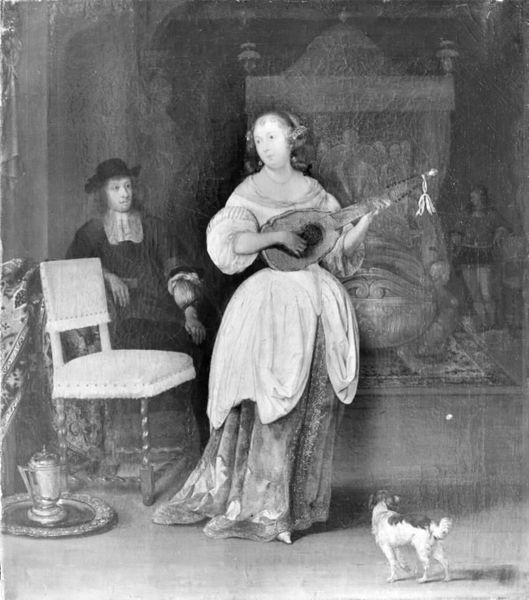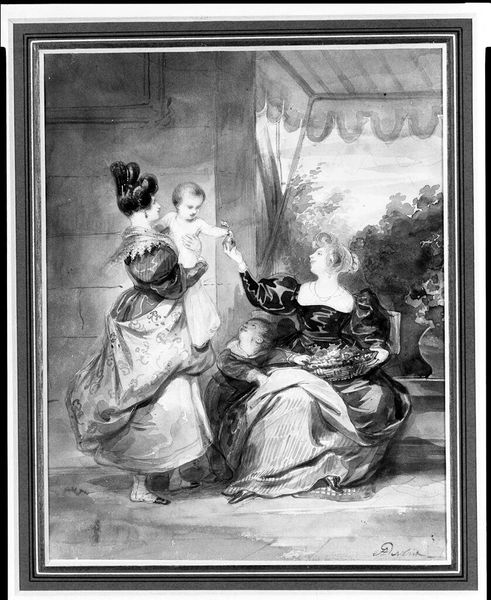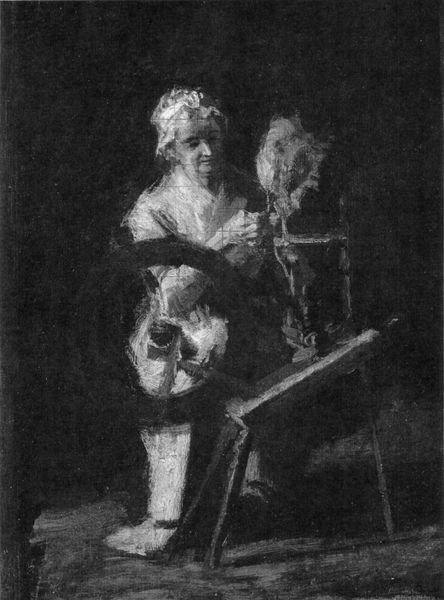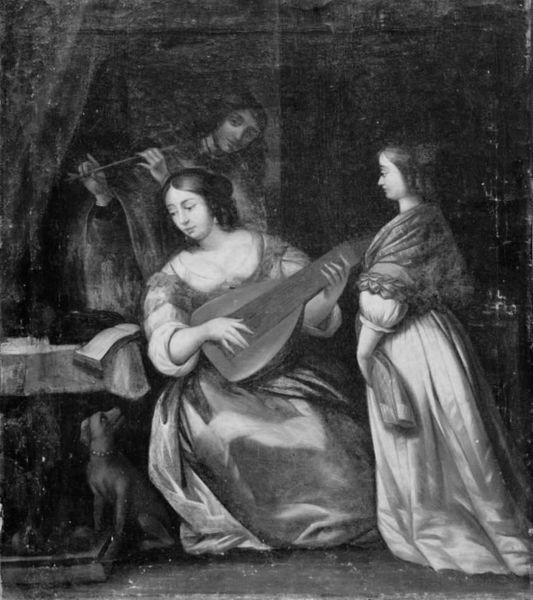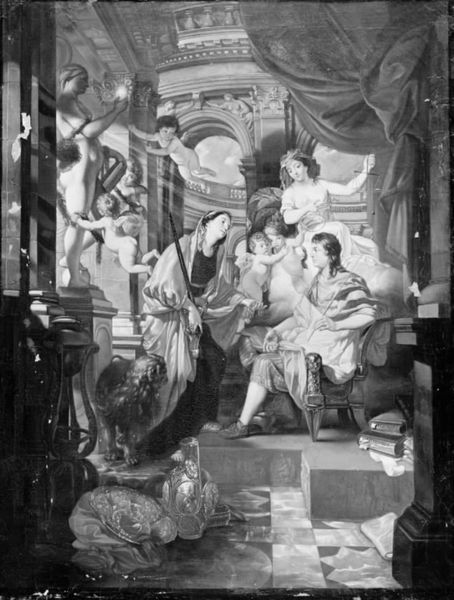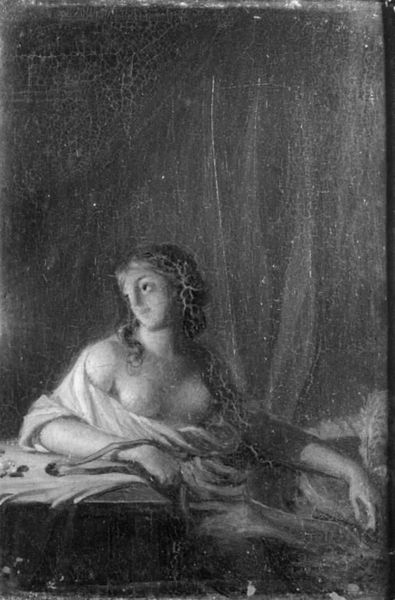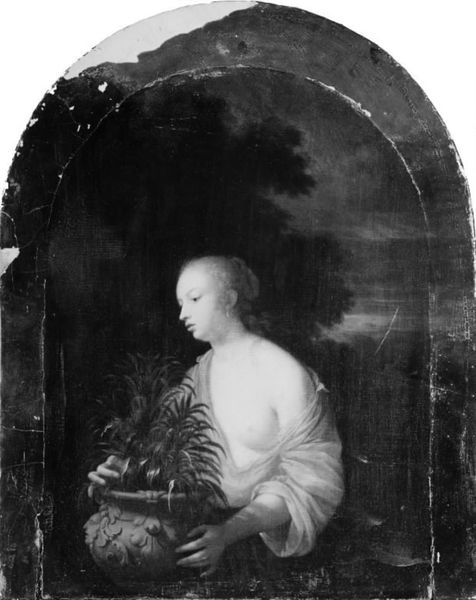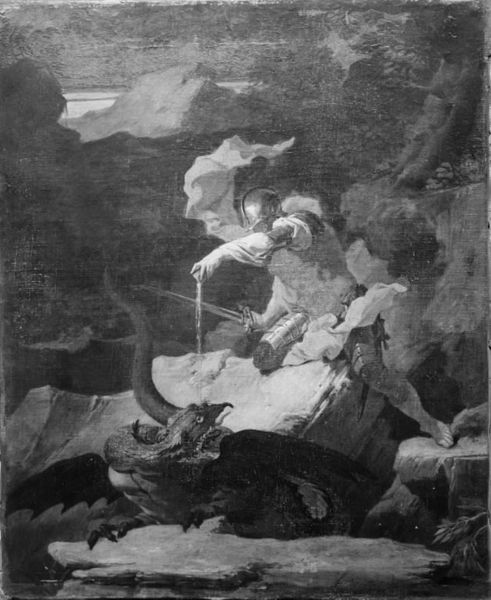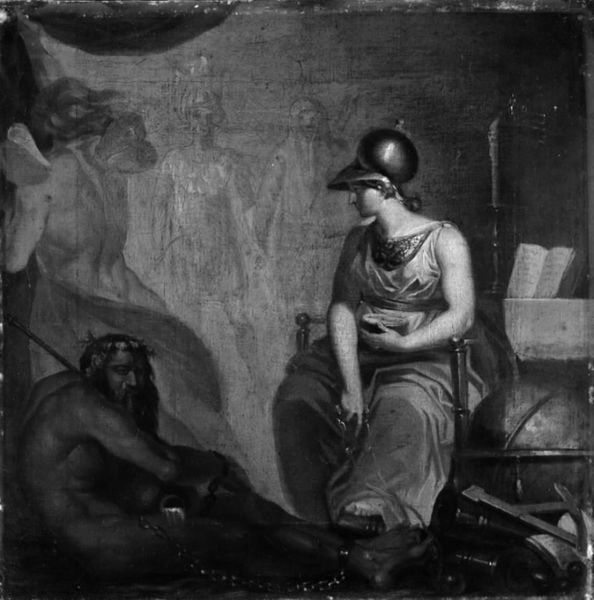
painting, oil-paint, wood
#
portrait
#
baroque
#
painting
#
oil-paint
#
landscape
#
wood
#
genre-painting
#
monochrome
#
monochrome
Dimensions: 26.5 cm (height) x 20.5 cm (width) (Netto)
Curator: Willem van Mieris painted "A Shepherdess with a Dog" around 1685, rendered with oil paint on wood. Editor: There’s something melancholic about the light, even in this grayscale reproduction. She seems wistful, detached from her surroundings. Curator: Indeed. Considering Van Mieris's meticulous technique, one must appreciate the craftsmanship. Look at how he handles the depiction of the shepherdess's clothing –the sheen and fall of the fabric alone! And then there's the basket she holds and even her hat; the rendering of these common items transforms the everyday labor of this woman. Editor: I think that this work offers a potent exploration of the romanticized idea of rural life contrasted against a stark rendering of the female form that perpetuates dominant power structures in 17th-century Dutch society. Notice that her presentation appears rather idealized – her skin is smooth and untouched. This idyllic portrait erases the real lived experiences and often difficult physical realities for shepherdesses during the period, and yet there is still a human vulnerability shown in the slightly turned down gaze. Curator: It is interesting that you interpret it as melancholic in terms of content but to me there’s a tactile delight in the production, right down to the evident wood grain texture that contributes another layer to our experience. And it cannot go without mentioning the small dog! Note that even the dog's coat has areas of striking shine created through detailed, fine brushstrokes. It speaks to Van Mieris' careful working process. Editor: Agreed, but that's also part of the artifice, isn't it? These carefully crafted surfaces create an illusion—a fantasy of labor and leisure rather than a reflection of material circumstances for many women who worked these trades in the period. By extension, isn't that something the artist might be intentionally showing us, a tension between perception and representation? Curator: Perhaps. This interplay shows Van Mieris’ brilliance, I think. Editor: Ultimately, examining such images allows us to reflect critically on labor and consider ways dominant art paradigms have historically marginalized particular bodies and perspectives.
Comments
No comments
Be the first to comment and join the conversation on the ultimate creative platform.
